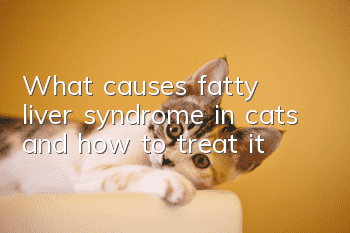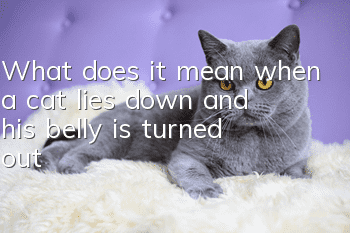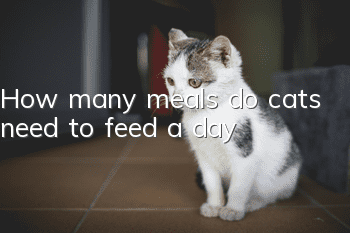What causes fatty liver syndrome in cats and how to treat it

The liver is one of the most fragile organs in cats. It can filter toxins, but an overload of toxins can cause liver failure. Some pets are genetically predisposed to liver failure, while vitamin deficiencies can cause liver malfunction in other animals, especially cats. Bacterial or viral infections of the liver can also cause this vital organ to stop working.
Feline fatty liver syndrome/feline hepatic lipidosis:
The most common reason is that the cat has not eaten for a long time, causing the liver to start digesting the stored fat, and part of the undigested fat is trapped in the liver; if you find that the ears, gums, etc. are yellow, you need to pay extreme attention and send them to the hospital in time. Hospital. Fatty liver ranks first among cat liver diseases. If you don’t seek medical treatment in time after suffering from it, it will be a dead end.
· Sudden weight loss
· Decreased appetite
· Depressed spirit
· Vomiting, diarrhea/constipation (alternating)
· Liver enlargement (no obvious pain when touched)
·Excessive drooling
· Abnormal behavior
· Muscle atrophy
· Anemia
· Jaundice (yellowing of the skin of the eyes, often occurring in the later stages of the disease)
Note: Some medical studies have shown that cats of all ages are at risk of disease, with older and middle-aged cats having the highest risk, especially female cats and obese cats.
The whites of the cat’s eyes in the picture have turned yellow
After the initial weight loss and loss of appetite, after we changed the diet, the cat would try to eat. I have to say that we breathed a sigh of relief. But at this time, the cat's liver has been affected, and then it will eat less. By the time we find something is wrong, the cat has already developed symptoms of jaundice. The result of continued deterioration is that the cat's coagulation ability will be impaired, bruises will appear after a slight bump, and even cats with severe liver disease may develop skin fragility syndrome, leading to skin scarring.
The early symptoms of fatty liver are almost the same as a cat swallowing hair balls or foreign objects. Only changes in behavior indicate physical discomfort. Therefore, parents must be alert to any changes in cats during daily interactions, even subtle changes; once discovered Something is wrong, please send to the hospital immediately for disease testing.
Note: If an obese cat has experienced a sudden loss of appetite and rapid weight loss, you also need to be vigilant.
Diagnosis method:
·Biochemical indicators
Liver enzyme SAP and bilirubin are significantly increased, high cholesterol, abnormal bile acids, and decreased coagulation ability.
·X-ray
The liver is normal/enlarged.
· Ultrasound
Typical changes can be seen in the liver, excluding other causes such as other conditions (such as liver lymphoma, liver abscess, etc.) and laboratory abnormalities.
·Biopsy
Through liver puncture biopsy or fine needle aspiration.
·Urine test
It shows an increase in urinary ketones, but it is worth noting that diabetes can also increase urinary ketones.
Causes of fatty liver syndrome:
1. Primary
· Long-term intake of high fat and carbohydrates
· Foods low in protein
· Hungry
· Insufficient exercise
· Insufficient anti-fat substances
· Stress response (environment/diet changes, adding new members, long-distance transportation, etc.)
2. Inducibility
· Cholangiohepatitis
· Pancreatitis
· Diabetes
·Inflammatory bowel disease
· Cancer
· Parasitic diseases
· Other infectious diseases
Treatment methods:
Because cats suffering from fatty liver want to survive, they must ensure that they eat enough. Of course, this is not to question the parents, but force feeding will cause many cats to resist and accidentally injure you, and it is easy toIt causes great psychological pressure on the cat, causing the cat to become more resistant to eating. If you let a professional doctor handle it for you (such as feeding with a feeding tube), there will be a lot of recovery, and there are many diseases that are similar to fatty liver and need to be ruled out by the hospital. At the same time, other potential diseases can also be treated together, saving you unnecessary trouble. Necessary trouble.
·Nasogastric feeding tube
It is inserted into the stomach through the side of the cat and enters the stomach (or esophagus) through the nose. The size/type of the feeding tube depends on the size and severity of the cat, and whether it can withstand the placement of the nasogastric tube.
Note: Food intake is an important step in determining whether a cat can survive successfully. Although a nasogastric tube is uncomfortable, it is less stressful and more efficient than forced feeding through a syringe.
· Feeding accelerator
Such as diazepam, but it is suitable for cats who still have appetite and interest in food; mirtazapine is a more popular appetite enhancer in recent years. It is originally a human psychotropic drug. The use of low doses will have a strong appetite enhancement effect. Effect (but some cats have no effect after eating it, and we are not sure why yet.)
· Replenish fluids and electrolytes
Most cats with fatty liver disease will become dehydrated, and if a cat is vomiting significantly, their blood potassium levels are usually very low.
· Vitamins
Cats with hepatic steatosis need to supplement vitamin K to help the liver produce factors that help blood coagulation; long-term anorexia can supplement thiamine; in addition, the intake of carnitine can enhance fat metabolism and is widely used.
·Gastrointestinal drugs
Such as cimetidine, ranitidine, etc., can prevent gastric and intestinal ulcers; metoclopramide can reduce vomiting and stimulate the movement of food through the stomach and intestines.
·Treatment of hepatic encephalopathy
Drugs such as neomycin or metronidazole can be used.
·Antibiotics
To prevent secondary infections or to contain an existing infection, some antibiotics may be used.
Note: Drug feeding must follow doctor’s advice
The process of treating fatty liver is relatively long and requires extremely high dietary requirements. During the treatment period, you need to feed a nutritious, high-protein, easy-to-digest diet, and eat small meals frequently. Still thatAs the old saying goes, the above is only for reference. The specific treatment plan is determined by the doctor based on the severity of the disease. Leave professional matters to the professionals.
Prevention and prevention of recurrence:
· Avoid excessive intake of starchy and high-fat foods
· If the cat is already obese, it is recommended to go to the hospital for a physical examination
· Exercise more (play) and reduce intake appropriately
· Feed at fixed points and eat small meals frequently
Note: Be sure to pay attention to unbranded, low-quality commercial foods. These products are one of the potential causes of many inflammatory diseases. This includes chronic hepatitis, chronic pancreatitis, inflammatory bowel disease, cholecystitis and other common diseases in pet cats, as well as fatty liver. The proportions and raw material quality of products such as cat food are based on economic considerations and are based on industrial feed standards AAFCO. The starting point does not include the long-term and overall health of cats. (Text is excerpted from Dr. Ron Hines’ article "Hepatic Lipidosis Why It Occurs, How Vets Treat It, How To Prevent It")
Warm Tips:
During the treatment period, the cat can gradually return to the habit of eating independently. The cat can smell the food it usually likes to eat every day (it can eat whatever it wants at this time). Try heating the canned cat to stimulate a strong fragrance and cater to its feeding method. (For example, eating in a familiar place requires a doctor’s permission).
Hello everyone, we have seven days of fun during the National Day. The notification will be changed to 1, 4, and 7 for three days. We have prepared a bunch of cats for everyone, so you can suck them all~~~
- Causes and treatment of urinary tract stones in cats
- What are the advantages and disadvantages of British Shorthair blue cats?
- Why is the female cat not in heat?
- What are the games about cats? Four games that cats like!
- What should I do if my cat is in a bad mood?
- How to train a cat to remember its own name? It’s actually very simple!
- Five tips to train a cat and make it stop scratching and biting!
- What should you pay attention to when adopting a stray cat? How to deal with stray cats?
- What should I do if my cat has heat stroke and won’t eat or drink water?
- What should Siberian cats eat?



